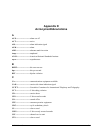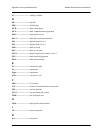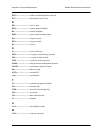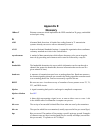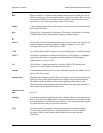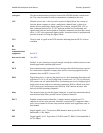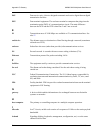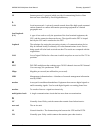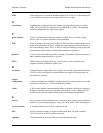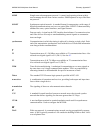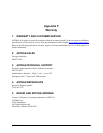
E-2 61200290L1-1G
Appendix E, Glossary MX2800 M13 Multiplexer User Manual
BPV Bipolar violation. A violation in the alternate mark inversion (AMI) line code in
which consecutive 1s are represented by pulses of opposite polarity. BPVs that are
not intentional (B8ZS) are counted as errors. Could also be the presence of two
consecutive 1 bits of the same polarity on the T-carrier line.
bridge A data communications device that connects two or more networks and forwards
packets between them.
byte Generally, an 8-bit quantity of information. This term is used mainly in referring
to parallel data transfer, semiconductor capacity, and data storage.
C
carrier The provider of the telecommunication services to the customer site. Carriers can
be local telephone companies, regional telephone companies, or any inter-
exchange carrier such as AT&T, Sprint, or MCI.
C-bit An overhead bit in the DS3 string not used for framing, parity, or alarm indication.
CCITT Consultive Committee for International Telephony and Telegraphy. A standards
organization that devises and proposes recommendations for international
communications. See also ANSI.
CD Carrier detect. A signal generated by a modem or DSU/CSU indicating the
presence of a carrier signal on a communications link.
channel A transmission path between two or more termination points, also called a circuit,
facility, line, link, or path.
channel bank Equipment in a telephone central office or customer premises that performs multi-
plexing of lower-speed digital channels into a higher-speed composite channel.
The channel bank also detects and transmits signaling information for each
channel, thereby transmitting framing information so that time slots allocated to
each channel can be identified by the receiver.
channel service
unit See CSU.
clocking An oscillator-generated signal that provides a timing reference for a transmission
link. A clock provides signals used in a transmission system to control the timing
of certain functions. The clock has two functions: (1) to generate periodic signals
for synchronization, and (2) to provide a time base.
CPE Customer premises equipment. All telecommunications terminal equipment
located on the customer premises, including telephone sets, private branch
exchanges (PBXs), data terminals, and customer-owned, coin-operated
telephones.




